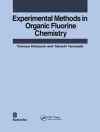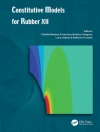This compilation opens with a comprehensive review of heavy metals involves the unifying theme of electron transfer (ET), reactive oxygen species (ROS) and oxidative stress (OS) applied to toxicity, which often arises from pollution. The beneficial effect of antioxidants (AOs) supports the participation of oxidative stress. ROS are examined for their application to illnesses such as: cancer, cardiovascular diseases, autism, Alzheimer’s disease, Parkinson’s disease, neurodegenerative diseases and aging illnesses. Afterwards, the mechanisms of ROS generation in the skin, the roles of ROS in altering the skin and ROS elimination in the body are discussed. The etiology of osteoarthritis is discussed, including oxidative stress and the overproduction of ROS, which is responsible in intracellular signaling processes, chondrocyte senescence and apoptosis, extracellular matrix synthesis and degradation along with synovial inflammation and dysfunction of the subchondral bone. The authors examine how increased ROS production generates development of malignancy; ROS are formed in vivo and many are powerful oxidizing agents, capable of damaging DNA and other biomolecules. Additionally, ROS are well-recognized for their dual roles as both deleterious and beneficial species. They are produced in many normal and abnormal processes in humans, such as aging, joint diseases, and cancer. Increased ROS production leads to tissue damage associated with inflammation and the overproduction of ROS results in oxidative stress, which can be an important mediator of damage to cell structures (membranes, lipids, proteins, and DNA). However, low/moderate levels of ROS can act as indispensable second messengers that have a beneficial effect on regulating several of radical cellular activities, including cell activation, proliferation, death, and gene expression. An outline of the present knowledge on the impact of m KATP opening on ROS production, and ROS signaling events triggered by m KATP opening is provided, in order to find a link between bioenergetic effects of m KATP channels functioning and multiple pathways of cytoprotection afforded by pharmacological m KATP channels openers. It is generally thought that mitochondrial permeability transition pore (m PTP) is a key end effector of cytoprotective signaling triggered by m KATP channels opening, which inhibition affords protection under metabolic stress conditions. Subsequently, a chapter is included focusing on the role of ROS in causing oxidative injury, as well as the depletion of ROS. Lastly, redox cycles of several benzene-diol derivatives are reported. The redox cycles can be constructed by benzene-diol compounds, the reduced form of benzoquinone, nicotinamide adenine-dinucleotide, and metal ions. The substituents of benzene-diols strongly affect the rates of their redox cycles. (Nova)
Shannon Wilkerson
Reactive Oxygen Species (ROS) [PDF ebook]
Mechanisms and Role in Health and Disease
Reactive Oxygen Species (ROS) [PDF ebook]
Mechanisms and Role in Health and Disease
购买此电子书可免费获赠一本!
格式 PDF ● 网页 346 ● ISBN 9781536131673 ● 编辑 Shannon Wilkerson ● 出版者 Nova Science Publishers ● 发布时间 2018 ● 下载 3 时 ● 货币 EUR ● ID 7217619 ● 复制保护 Adobe DRM
需要具备DRM功能的电子书阅读器












